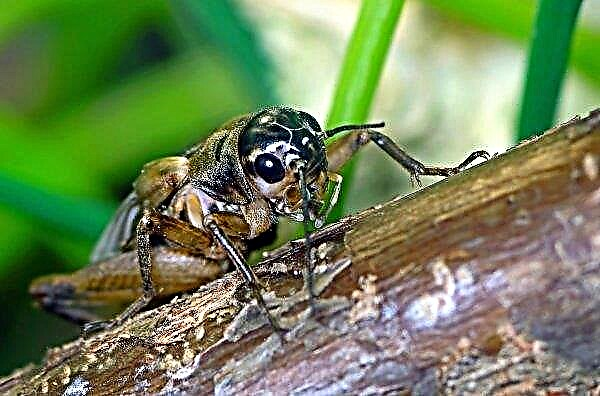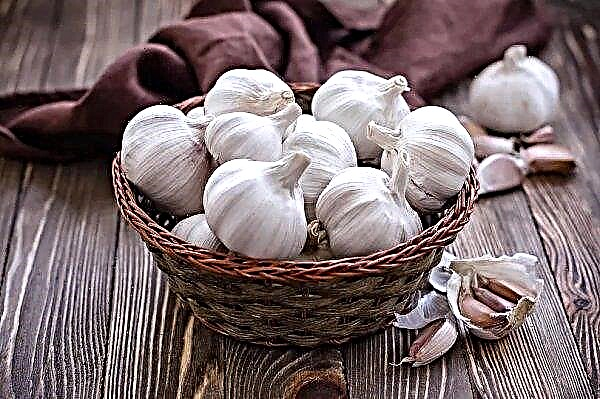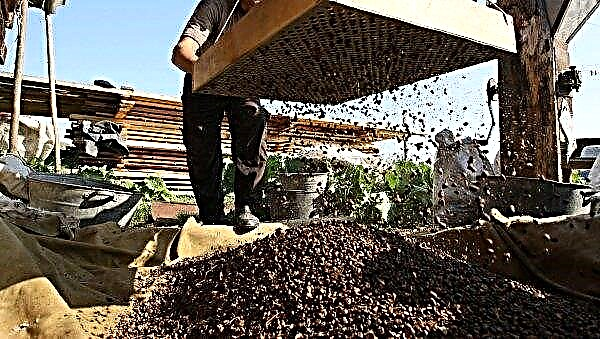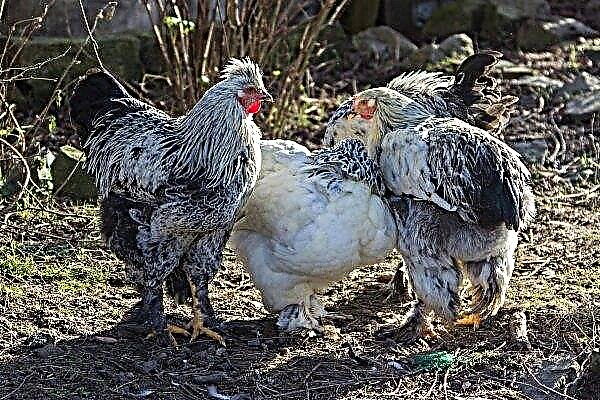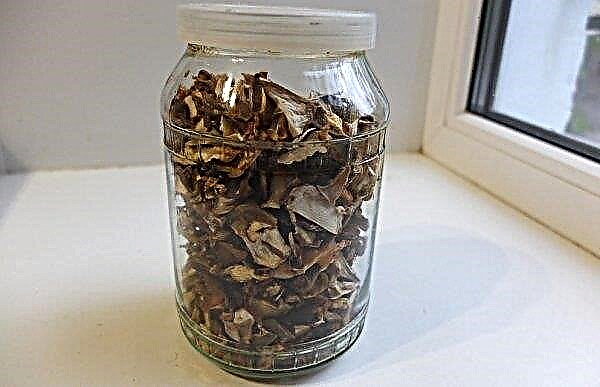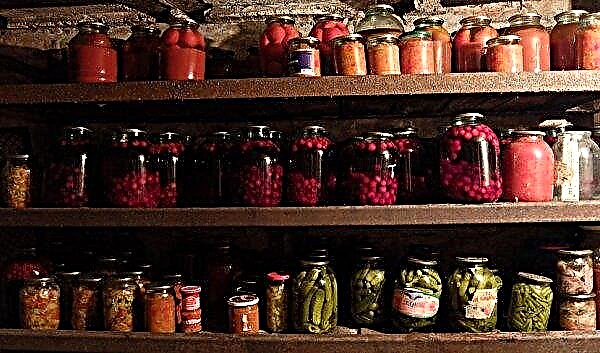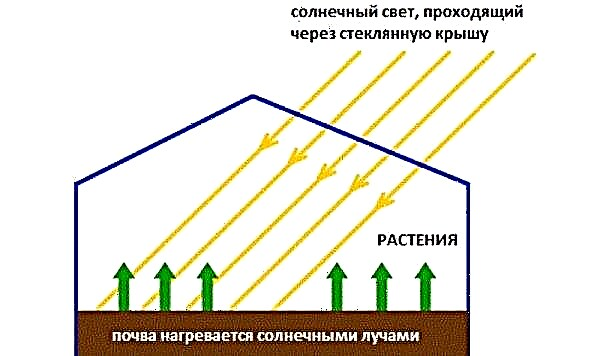Cilantro (or coriander) is one of the most popular types of greens, which is used to prepare a variety of dishes, so many gardeners grow this plant in their areas. But few know that fragrant coriander can be grown even in winter on the windowsill in a regular city apartment. This article lists the conditions necessary for this, step-by-step instructions for planting seeds and caring for the plant, as well as a botanical description of cilantro and harvest rules.
Did you know? An essential oil with a spicy aroma and a sweet taste is made from coriander seeds. To produce 1 kg of such oil, about 100 kg of seeds must be processed.
Plant description
In appearance, the plant resembles a parsley bush. A characteristic feature of cilantro is that its aroma and taste change after flowering, and you can use not only green leaves, but also seeds.
A brief botanical description of coriander is presented below:
- This annual plant belongs to the Umbrella family. It has a straight stem, whose height is 40–80 cm.
- The root system of the plant consists of a direct rod root and small adventitious roots. With any damage to the main root, cilantro can die, so replanting it is not recommended.
- The leaves are located on long stalks and painted in dark green color. They are dissected and consist of several wide lobules.
- Green leaves have a pleasant citrus flavor and rich aroma, and also contain many vitamins.
- The flowering period begins approximately 2 months after planting. Inflorescences have the shape of an umbrella, which consists of small white or pink flowers.
- The fruit of the plant is spherical and contains 2 ovoid seeds. It ripens 1.5 months after the beginning of flowering.
- The ripened seeds of the plant have a strong aroma and a sweet, pungent taste, therefore they are used in cooking as a seasoning.
How to grow cilantro at home on the windowsill
Many people mistakenly believe that coriander can be grown only in open ground, and in indoor conditions it will not work to harvest this crop. But if you choose the right pot for growing the plant, prepare the right soil and successfully place the cilantro in the room, then you can grow it at any time of the year, getting tasty and healthy greens for preparing various dishes. About all the requirements for the successful cultivation of this crop at home - further in the article.
What should be the capacity for landing
Coriander is characterized by a powerful and large root system, which takes up a lot of space and does not respond well to transplants. For this reason, a pot for growing plants must meet certain requirements, which are listed below:
- it is best to grow coriander in a rectangular container - such a pot can be conveniently placed on the windowsill, using the window space to the maximum;
- the width of the pot should be approximately 25-30 cm, and its depth - not less than 40 cm;
- the flowerpot should allow the soil to "breathe", so for growing cilantro it is best to use plastic or ceramic flowerpots, wooden boxes, as well as clay pots without enamel;
- there must be drainage holes at the bottom of the tank so that moisture does not stagnate around the roots of the plant.
Important! Plastic flowerpots let air through worse, so when growing cilantro in them, you often need to loosen the soil around the stem.
Substrate requirements
Cilantro grows best in nutrient soil, which contains all the substances necessary for the plant and at the same time passes air and water well.
The main soil requirements for this plant are listed below:
- loamy or sandy loamy soil can be used to grow the crop;
- the earth should be loose enough to absorb moisture well and let air through to the roots;
- you can buy ready-made soil for indoor plants in the store or prepare the substrate yourself from turf soil, sand, peat and humus, mixed in equal amounts;
- in terms of acidity, the soil for cilantro should be slightly alkaline or neutral;
- to additionally enrich the soil with useful trace elements, 3 tbsp are added per 1 kg of the mixture. l ashes;
- to disinfect the substrate, it is recommended to heat it in the oven before planting - this will destroy all harmful microorganisms.

Where to place the pot with seedlings
The correct location of the container with the plant in the room will allow the coriander to receive the necessary amount of sunlight and will stimulate the growth of green shoots.
Here are a few rules for arranging a pot of cilantro in a room:
- it is recommended to place the container on the windowsill of the window facing the south or south-west side;
- optimal indoor air temperature is not less than + 15 ° С, but seeds can germinate even at + 6 ° С;
- the daylight hours for coriander should be at least 12 hours per day.
Important! The shelf life of planting material is 2 years. The fresher the seeds that are used for sowing, the better their germination.
Rules for sowing cilantro seeds
Coriander is grown from seeds that can be collected from plants yourself or purchased in a specialized store.
Step-by-step instructions for planting seeds for growing cilantro on the windowsill are presented below:
- Select for planting even seeds of the correct form, which have no damage. Soak them in a glass of water for 2 hours.
- Fill the prepared container with soil and prepare pits 1–1.5 cm deep. Deepen 2–3 seeds into each of them. The distance between adjacent seeds should be about 7-10 cm.
- Sprinkle planting material with moistened soil, lightly tamping its surface with your hands.
- Pour water abundantly in a pot so that it is completely wet. Cover the container with film, and then put it in a room with dim lighting.
- Every day, the film needs to be slightly raised to air the planted material. As the topsoil dries up, it is carefully sprayed with warm water.
- The first green shoots appear 10-14 days after sowing. After this, the film must be removed.
Video: sowing cilantro seeds
How to care for coriander
After the coriander seeds sprouted, caring for the plant comes down to regular watering, timely fertilizing, weeding weeds and pruning leaves.
The basic rules for caring for cilantro in a room are presented below:
- the plant is not demanding on heat and grows well at normal room temperature, but during heat (from + 30 ° C) flower stalks form much faster;
- after the planting material has sprouted, it is necessary to water the sprouts in small portions, preventing waterlogging of the earth;
- when the first few leaves appear on young sprouts, the plantings are thinned out - for this, weak sprouts are removed so that one plant remains in each hole;
- before flowering, the plant needs frequent and plentiful watering, but the excess water needs to be drained so that it does not stagnate around the roots. This should be done approximately 15 minutes after cilantro irrigation;
- to refresh the surface of the leaves and increase the level of humidity in the room, the plant is sprayed with water 2-3 times a week;
- the soil in a container with cilantro needs periodic loosening every 5-7 days - this procedure improves the access of air and water to the root system, which has a beneficial effect on the growth and development of coriander;
- you need to grow cilantro in a brightly lit room, and with a short natural daylight use artificial light sources;
- For good growth, coriander needs regular top dressing - for this, ready-made mineral fertilizers diluted with water are used in accordance with the instructions on the package. You need to make them every 14 days, starting from the 3rd week after seed germination;
- at the growth stage of greenery, fertilizers with a high nitrogen content are used, and at the time of seed ripening, fertilizing with a high content of phosphorus and potassium is applied;
- when weeds appear in a pot with a plant, they are removed - this will prevent soil depletion and the occurrence of diseases.
Did you know? In India, cilantro leaves and seeds are used as a natural aphrodisiac to increase libido.
How to collect and store crops from the windowsill
You can cut green cilantro about a month after planting the seeds, when 5-6 leaves grow on the seedlings. Coriander is used fresh or dried, and after flowering, you can also collect and use the seeds of the plant.
The basic rules for collecting and using cilantro are listed below:
- for fresh use, cilantro is cut immediately before use, as the green stems quickly wither after cutting and cannot be stored;
- plant height at the time of cutting is usually 15–20 cm;
- you can cut the cilantro stem under the root or pinch off individual leaves - in the second case, the plant continues to grow green mass, and from it you can collect several more green crops;
- you can use the plant fresh only before flowering, since after the formation of peduncles, cilantro acquires a characteristic pungent odor;
- coriander can be dried - for this, the sprouts are cut completely and dried in a warm room or outdoors in the shade (in the summer), and then packed in airtight bags or containers with lids;
- plant seeds are also often used for food - they are usually harvested 90–120 days after planting. After drying, the coriander seeds are stored in a hermetically sealed container for up to 2 years, and before direct use they can be ground into powder.
Important! Most of the vitamins are found in the green stems and leaves of cilantro. Dried plants lose their aroma and pleasant taste.
Cilantro is unpretentious to growing conditions, and it takes only a month to ripen the green harvest, so you can grow it on the windowsill at any time of the year.
Below is a list of tips on how to get aromatic coriander throughout the year:
- seeds need to be planted in several containers with an interval of 2-3 weeks;
- for re-planting seeds, you can use the same capacity with soil in which the previous crop of greens was grown;
- in order to enrich the soil with useful substances, it is recommended to add compost to the substrate before reuse;
- before each seed planting, the soil must first be sanitized in the oven;
- to increase the period of collecting fresh herbs, you need to remove the upper ovaries on the stem.
 Fresh cilantro can be a useful and tasty addition to dishes prepared in the winter with a lack of fresh vegetables and herbs. It is very simple to grow this culture on the windowsill, and using the recommendations listed above, you can provide yourself with fresh herbs throughout the year.
Fresh cilantro can be a useful and tasty addition to dishes prepared in the winter with a lack of fresh vegetables and herbs. It is very simple to grow this culture on the windowsill, and using the recommendations listed above, you can provide yourself with fresh herbs throughout the year.


